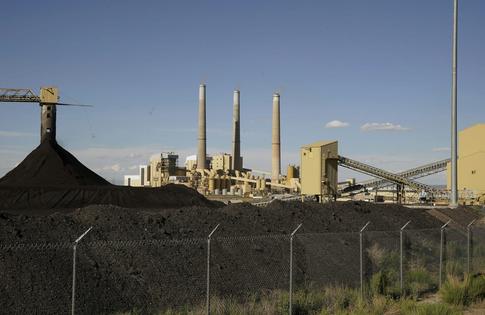New EPA regulations target air, water, land and climate pollution from power plants, especially those that burn coal
Published in Science & Technology News
Electric power generation in the U.S. is shifting rapidly away from fossil fuels toward cleaner and lower-carbon sources. State clean energy targets and dramatic declines in the cost of renewable electricity are the most important reasons.
But fossil fuel plants still generate 60% of the U.S. electricity supply, producing air, water and land pollutants and greenhouse gases in the process. To reduce these impacts, the Environmental Protection Agency announced a suite of rules on April 25, 2024. They focus mainly on coal plants, the nation’s most-polluting electricity source.
As an environmental lawyer who has been in practice since the early 1970s, I believe these curbs on power plant pollution are long overdue. The new rules close loopholes in existing laws that have allowed coal-fired power plants to pollute the nation’s air and water for decades. And they require utilities to drastically slash these plants’ greenhouse gas emissions or close them down.
Opponents, including industry groups and Republican attorneys general, have raised concerns, and some have vowed to sue. They argue that the EPA has overreached its legal authority and is imposing crippling costs on the coal industry. While these arguments may resonate with conservative judges, in my view the EPA’s carefully crafted rules are on firm legal ground and have a strong chance of being upheld.
The first rule updates the Clean Air Act’s 2012 Mercury and Air Toxics Standards. Mercury, which is emitted into the air when coal is burned, is a neurotoxin that causes developmental damage in children and has contaminated fisheries throughout the U.S.
The new rule closes the so-called “lignite loophole,” which allows plants burning lignite – the lowest grade of coal – to emit more than three times as much mercury pollution as other coal plants. There are only a handful of lignite plants still operating in the U.S., concentrated in Texas and North Dakota. The new rule lowers the emissions standard for mercury from these plants by 70%.
A second rule tightens standards for wastewater from coal-fired power plants under the Clean Water Act. These plants use a lot of water for cooling, producing steam and industrial processes. The wastewater that they discharge into rivers, lakes and streams contains toxic pollutants such as mercury and arsenic that threaten drinking water supplies and fisheries.
The EPA estimates that the new rule will reduce these pollutants by about 670 million pounds per year. Coal plant owners will have until 2029 to comply, unless they agree to permanently stop burning coal by 2034.
Burning coal also generates millions of tons of ash, which can contain toxic heavy metals such as mercury, arsenic and cadmium. The third new rule deals with “legacy sites” – inactive coal plants – that collectively hold 500 million tons of coal ash in unlined, unmonitored waste pits and holding ponds.
Coal ash spills have contaminated rivers in Tennessee, North Carolina and elsewhere. Over 160 unlined lagoons remain. Most legacy sites are located in low-income communities and communities of color.
...continued








Comments